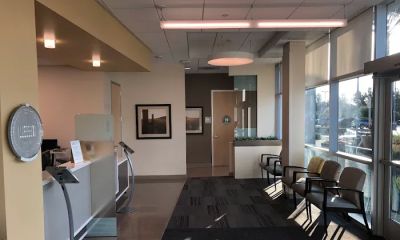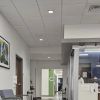- 1-understanding-self-monitoring-heart-disease
- 2-benefits-of-self-monitoring
- 3-tools-and-techniques-for-monitoring
- 4-integrating-monitoring-into-daily-life
- 5-case-studies-and-personal-stories
- 6-overcoming-monitoring-challenges
- 7-how-heartcare-hub-supports-you
1. Understanding Self-Monitoring in Heart Disease
1.1 Defining Self-Monitoring
Self-monitoring means regularly tracking your cardiovascular signals—blood pressure, heart rate, and symptoms—outside the clinic. It empowers patients to spot subtle changes early and share precise data with their cardiologist.

1.2 Why It Matters
Clinical visits offer snapshots, but heart disease evolves daily. John, a 62-year-old retired teacher, noticed his morning blood pressure creeping up over three weeks. His home readings prompted an earlier medication adjustment, avoiding a potential hospital stay.
Deborah Heart and Lung Center
deborah heart and lung center
200 Trenton Rd, Browns Mills, NJ 08015, USA

2. Benefits of Self-Monitoring
2.1 Proactive Cardiac Care
Tracking blood pressure and ECG at home helps detect trends before they become emergencies. Consistent data allowed Maria, diagnosed with hypertension, to halve her risk of stroke by adjusting her diet and meds in real time.
2.2 Enhanced Patient-Doctor Communication
Accurate logs replace “I think my readings were high” with solid evidence. This clarity speeds up treatment tweaks and builds trust—doctors see patterns, and patients feel heard.
2.3 Increased Confidence and Control
Heart disease often brings anxiety. When David learned to use a wearable heart monitor, he felt less fearful during his morning walks—he could check in instantly if chest tightness arose.
3. Tools and Techniques for Monitoring
3.1 Home Blood Pressure Tracking
Automatic cuffs with memory storage simplify daily checks. Aim for two readings each morning and evening. Log both systolic and diastolic values in a notebook or mobile health app.
3.2 Wearable Heart Monitors
Smart Watches and Chest Straps
Modern wearables offer continuous heart rate and rhythm alerts. Clara’s smartwatch flagged an irregular heartbeat during yoga, leading to an early atrial fibrillation diagnosis.
Portable ECG Devices
Small, wallet-sized ECG recorders capture single-lead tracings on demand. When Paul felt palpitations at 3 AM, he recorded a strip and emailed it to his cardiologist by breakfast.
3.3 Symptom Logging and Diary Keeping
Detail episodes of chest discomfort, shortness of breath, or dizziness—note time, activity, and severity. Over months, these entries reveal triggers and guide lifestyle tweaks.
4. Integrating Monitoring into Daily Life
4.1 Establishing a Routine
Pair readings with existing habits—after brushing teeth or before morning coffee. Consistency ensures reliable comparisons over time.
4.2 Leveraging Mobile Health Apps
Apps like HeartTrack and CardioLog sync data from devices, generate trend graphs, and remind you of missed readings. Choose an app compatible with your monitors and secure in data privacy.
4.3 Sharing Data Securely
Set up automatic reports to your clinic’s portal or email. When Emma’s app flagged three high readings in a row, her care team called within hours to adjust her prescription.
5. Case Studies and Personal Stories
5.1 Tom’s Early Warning
After a mild heart attack, Tom began twice-daily blood pressure checks. A sudden spike one weekend led him to the ER, where doctors discovered worsening blockages. Angioplasty that Monday prevented a second, more severe attack.
5.2 Priya’s Monitoring Breakthrough
Priya, a busy mom with congenital heart disease, struggled to find time for clinic visits. A smartwatch and ECG device let her track arrhythmias during kids’ soccer practice. Her care team used these home-collected episodes to optimize her beta-blocker dose.
6. Overcoming Monitoring Challenges
6.1 Device Accuracy and Calibration
Not all cuffs and wearables are created equal. Choose validated models, check readings against clinic equipment monthly, and follow manufacturer guidelines.
6.2 Data Overload and Anxiety
Seeing every fluctuation can cause worry. Set alert thresholds with your doctor—only flag readings outside agreed limits. Use app summaries rather than obsessing over single values.
6.3 Technical and Privacy Concerns
Ensure Bluetooth connections are secure and apps comply with health data regulations. If you struggle with tech setup, ask a family member or reach out to HeartCare Hub for step-by-step guidance.
7. How HeartCare Hub Supports You
7.1 Curated Monitoring Solutions
At HeartCare Hub, find expert recommendations on reliable blood pressure monitors, wearables, and ECG devices tailored to your lifestyle and budget.
7.2 Personalized Coaching and Resources
Join our virtual workshops to learn best practices in self-monitoring, data interpretation, and stress management. Our resource library includes video tutorials, downloadable logs, and clinician-vetted tips.




















Hoag Urgent Care Irvine - Sand Canyon
hoag urgent care
16205 Sand Canyon Ave Suite 100, Irvine, CA 92618, USA